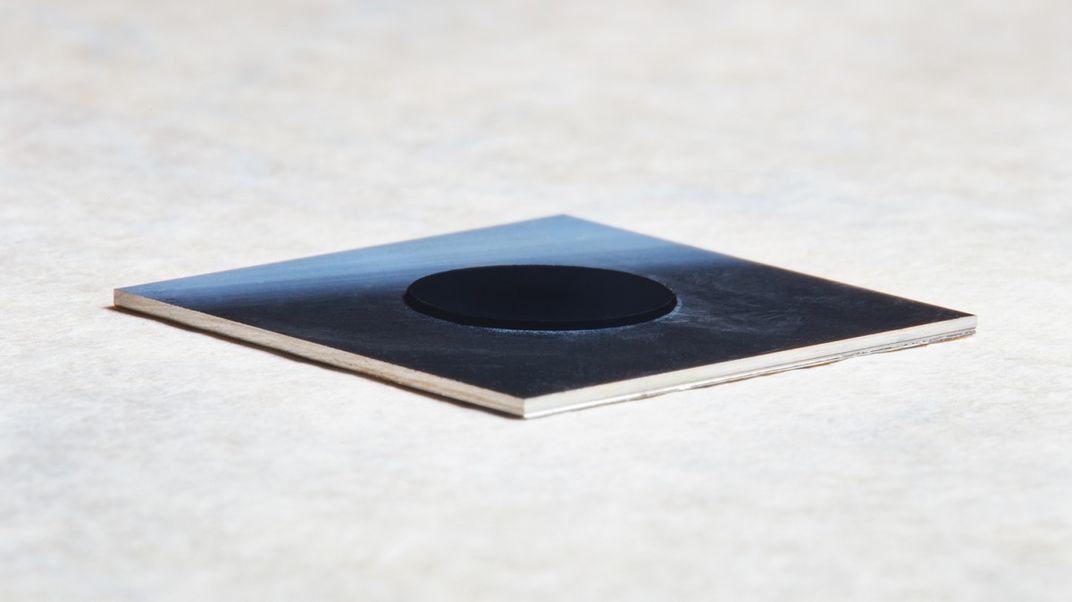Could This Be the Most Efficient Solar Panel Ever?
Taking advantage of temperatures upwards of 1,000 Celsius, these hot solar cells could produce twice as much energy as the industry standard
/https://tf-cmsv2-smithsonianmag-media.s3.amazonaws.com/filer/61/90/6190bd0d-a3ff-4000-917c-5cbe3aa56075/hotsolar3vacuumchamber.jpg)
Solar panels have been around for a while now, but the materials they’re made from make them incapable of converting more than about a quarter of the sun’s energy into usable electricity. According to MIT calculations, an average house in sunny Arizona still needs about 574 square feet of solar panels (assuming about 15 percent efficiency) to meet its daily energy needs. In chilly and gray-wintered Vermont, the same house would need 861 square feet. That’s a lot of paneling.
That’s why MIT researchers have been experimenting with an entirely new process for converting sunlight—one that takes advantage of extremely high temperatures to raise efficiency. If it works on a large scale, we could be seeing wildly more efficient solar panels in coming years, potentially changing the game for solar energy.
“With our research, we are trying to address the fundamental limitations of photovoltaic energy conversion,” says David Bierman, one of the researchers leading the project.
The technology turns sunlight into heat, then converts the heat back into light. The process uses a light concentrator of sorts called an “absorber-emitter,” with an absorbing layer of solid black carbon nanotubes that turn sunlight into heat. When temperatures reach 1,000 degrees Celsius or so (as hot as lava from many volcanoes, just to give you an idea), an emitting layer, made from photonic crystal, sends the energy back as the kind of light that the solar cell can use.
An optical filter reflects away all the light particles that cannot be used, a process called “photon recycling.” This increases the efficiency dramatically, making the cells as much as twice as efficient as the current standard.
Fittingly, the technology is nicknamed “hot solar cells.” The cells were recently named one of MIT Technology Review's “10 Breakthrough Technologies of 2017.” Editors at the publication have been compiling this list annually since 2002. This year, the technologies, from brain implants to self-driving trucks to cameras capable of taking 360-degree selfies, "will affect the economy and our politics, improve medicine, or influence our culture," according to MIT Technology Review. "Some are unfolding now; others will take a decade or more to develop," the editors say. "But you should know about all of them right now."

The technology is superior to standard solar cells on a very basic level. The semiconductor material of standard cells, which is almost always silicon, generally only captures light from the violet to red spectrum. This means that the rest of the sunlight spectrum is lost. Because of this fundamental problem, solar cells can only convert about a third of sunlight energy into electricity. This upper boundary, the maximum theoretical efficiency of a solar cell, is called the Shockley-Queisser limit. Solar panels made for home use generally convert far less than the Shockley-Queisser limit, as the most efficient materials are still extremely expensive. But with the hot solar cells, this limit, in place for more than 50 years, could be history.
At this point, researchers have only a prototype. It could be a decade or more before we see these hot solar cells on the market. Right now, the materials are so expensive it would be difficult to turn the cells into panels of the size needed for commercial use.
“We will need to solve a whole range of issues related to scaling-up the device to actually generate powers that are useful solutions for people and their problems,” Bierman says.
Bierman, and his colleagues on the project, Andrej Lenert, Ivan Celanovic, Marin Soljacic, Walker Chan and Evelyn N. Wang, are optimistic they can overcome these limits. They also hope to figure out how to store extra heat for later use. That could mean clean energy on the cloudiest of winter days. Even in Vermont.
/https://tf-cmsv2-smithsonianmag-media.s3.amazonaws.com/accounts/headshot/matchar.png)
/https://tf-cmsv2-smithsonianmag-media.s3.amazonaws.com/accounts/headshot/matchar.png)